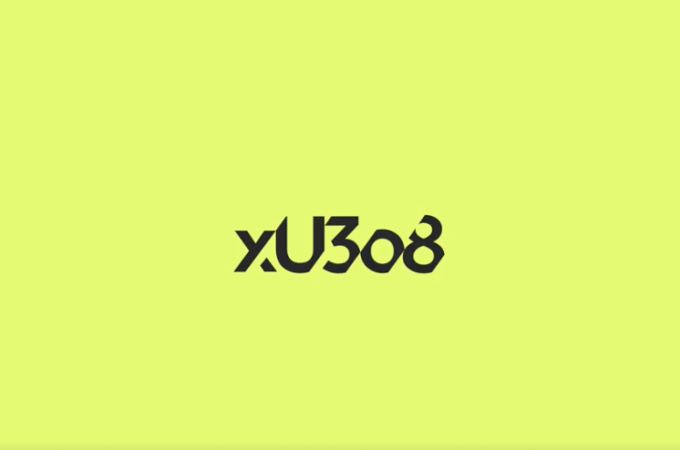
Hyperledger, smart contracts and private blockchains are a key focus: IBM
By Shiwen Yap for DealStreetAsia
The rise of blockchain has coincided with the growth of the a growing number of financial service majors entering this space, with technology corporations like IBM leveraging on this to growth their expertise and collaborate with them to explore the full potential of the blockchain.
IBM has already generated discussions regarding its role as a trustless protocol and its impact on business and society.
At its core, a blockchain is a decentralised digital ledger that offered a method for tracking items and transactions. Being a ‘trustless protocol’, it adds blocks of new transactions to the end of the chain, with encryption ensuring its integrity, being heavily resistant to tampering and errors. This is due to a record of the digital ledger being distributed across multiple nodes in a network, requiring a majority consensus amongst the network for a change to the information in the block.
According to Singapore-based blockchain specialists Zelda Anthony and Alan Lim at IBM, the use of blockchain has enabled the emergence of smart contracts, which is likely to impact the fields of compliance and due diligence in general and the profession of lawyers in particular.
Weighing in on the subject of smart contracts, Anthony argued: “I think there’s clearly going to be disruption and change. For instance, take the case of property owners and transfers. The way contracts are managed is going to change. Moving from paper to digital is already a part of what is happening, but I don’t think it will change the role of lawyers.
“In fact, it will help support legal firms in terms of applications for contract management to become more efficient and refocus on their core competencies as lawyers. Contracts still need people capable of understanding the policies and regulations that are being put in place with regards to the contract,” she added.
Lim explained: “Even with the blockchain you must remember that we are predominantly working in a real world with real constraints regulations and government policies. The real world doesn’t change as much. The question is asking how the tech that exists can be applied to the context of existing regulations, as well as geographic and economic boundaries.”
Observing that a crucial element of this is finding out how to “drive better transparency and remove ambiguity about how contracts are made between different parties,” it builds down to enabling lawyers to enter the contract and deal with such matters as finding out when it takes effect and which clauses are enforceable.
He shared: “Is the contract executed on blockchain or do we assume it’s going to be fulfilled for any other obligation outside the digital space. Smart contracts will change the way that lawyers operate and introduce additional capabilities beyond what lawyers are looking at.”
The Hyperledger
Asked on Bitcoin as a proof-of-concept and proof-of-value for how a trustless protocol operates, as well as their evolutionary trajectory, Anthony said that the more relevant phenomenon would be to discuss is the hyperledger, which is the focus of IBM.
The Hyperledger project is an open source collaborative effort created to advance cross-industry blockchain technologies managed under the Linux Foundation and is a global collaboration including corporate majors in finance, banking, Internet of Things, supply chains, manufacturing and technology.
Central to the discussion of the hyperledger is the matter of identity, with identity and membership services over a private blockchain being a key matter of interest for IBM at the moment.
She elaborated: “The potential of blockchain is wider than just bitcoin or the financial services. Ethereum and the developments involving it are a manifestation of this, especially with regards to distributed ledger technology.
She continues: “Our current concentration is on private blockchains. The role fo bitcoin and other related technologies is being anonymous and achieving consensus within that digital community. But we think that operating within highly regulated services like healthcare or finance, there is a place for both privacy and understanding identity.”
She further adds: “The Hyperledger can handle elements related to transactions such as settlement finality as opposed to probabilistic transactions. We’ve partnered with Linux Foundation on the Hyperledger and IBM has contributed to the architecture and source code, as well as technical steering committee”.
Edited excerpts from interaction:
This piece by the Australian Financial Review compares and contrasts the blockchain. Realistically, within the period of 2017-2020, what can the industry expect to see in practical terms?
Anthony: I’m foreseeing big change in the blockchain space. Some of our customers are experimenting with them in the financial services, while the public sector is trying out distributed communications solutions for use within the public service. Banks are using it for KYC (know your client) while others are looking at its deployment for trade finance or tracking the whole supply chain.
On the insurance side, we’re seeing people test it with claims processing for medical claims, while healthcare providers are experimenting with the blockchain’s use in medical records, vehicle records and providence of manufacturing.
Given the development of the Internet of Everything (IoE)/Internet of Things (IoT), what’s your take on using blockchain to decentralise these networks of devices and their role in securing them?
Lim: IoT and blockchain are two emerging and disruptive areas a lot of work being done in these areas. Worked with Samsung to explore working with original design manufacturers (ODMs) and original equipment manufacturers (OEMs) regarding how to secure them.
For instance, in logistics there has been some work done in using blockchain for tracking letters of credit across different banks, intermediaries and other agents along a supply chain, given that it aid in resolving disputes involving the supply chain.
From the perspective of digital transactions, using blockchain in the IoT we can understand greater detail about the physical environment; for instance when you’re shipping flowers we can capture data about the humidity and temperature. We can collect and merge the data to gain deeper insights into the operational context, as well as using the data to extend the capabilities of provenance.
These are areas where blockchain with its immutable, decentralised qualities can serve a specific and powerful role. As it evolves, interesting use cases will emerge.
With reference to this article in the European Financial Review, what do you see as the major impact of blockchain on capital markets, and their possible uses in stock exchanges?
Anthony: It’s going to be very disruptive, but the timing in ASEAN is different. Currently, IBM is working with the London Stock Exchange on some exploratory work as well as the Tokyo Stock Exchange in settlements. Bond settlements are an area that a number of companies are exploring.
These are all positive developments and beneficial for the bourses as that specific blockchain solution is good as bringing lots of parties together in a way that brings more visibility and accelerates the transaction execution.
It will happen sooner rather than later, and its sooner for stock exchanges. However, all these projects will take some time as the industry will need to adapt to the technology and the changes it brings. One project we’re currently engaged in at the moment is a partnership with Walmart to ship pork in China.
In July it was reported that the Reserve Bank of India is encouraging research initiatives involving the blockchain. What would be the impact of blockchain adoption on the Indian financial system and on the financial systems of emerging markets in general?
Anthony: This involves a discussion of a cashless society and financial inclusion. Is blockchain the right technology to look at that? I think it is, but how we go about implementing it is difficult. Do we use it for putting a new new international payments system in place? It’s not that easy. It’s about taking a digital currency and looking at that from a central bank level.
There are a certainly application in the remittance space, with a number of competing solutions , so some of those will get traction and be adopted. There are a big advantages around using blockchain – transparency, trust, reducing risk of fraud and disputes – and these are attributes that help with financial inclusion, which is where RBI is coming fro.
In some of the more developed economies, the central banks of those states are are exploring this area and looking at possible implementations.
Also Read:
IBM partners Singapore startup FreshTurf to use cloud, blockchain for parcel delivery
Blockchain tech market growing at 61.5% CAGR to 2021
BaaS for banks will be like AWS for Amazon: Igor Pesin, Life.SREDA VC
Fintech VC Life.SREDA launches ‘Banking on Blockchain’ fund, targets corpus of over $100m
Software AGs’ blockchain operationalisation could enhance ASEAN financial transparency
First appeared at DealStreetAsia






